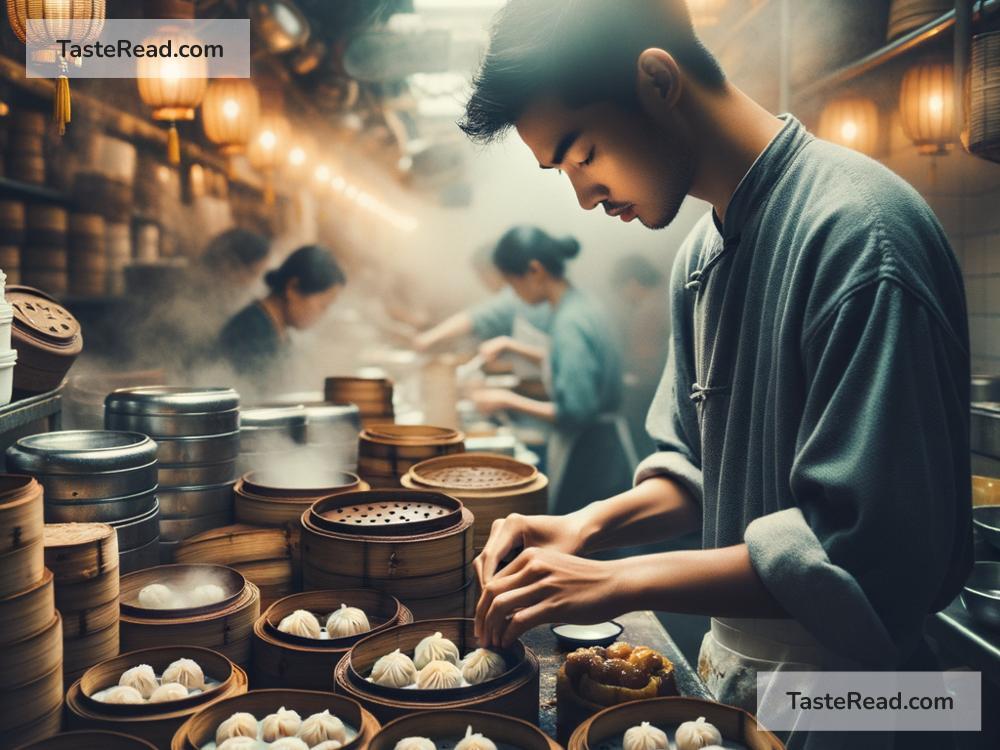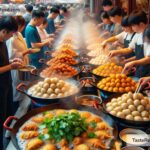Uncovering Timeless Dim Sum Rituals in Hong Kong
Dim sum is more than just food in Hong Kong; it is a culture, tradition, and a way of life. For decades, locals and visitors have gathered in bustling tea houses to enjoy bite-sized dishes and sip fragrant tea. Dim sum is not just a meal—it’s an experience, a ritual that speaks to the city’s rich heritage. If you’re ever in Hong Kong, exploring dim sum rituals is a must. Let’s dive into what makes this tradition so timeless.
What is Dim Sum?
Dim sum refers to small dishes that are typically served along with tea. The name “dim sum” literally means “touch the heart” in Cantonese, symbolizing how these delightful bites are meant to bring joy and warmth.
Dim sum includes a variety of dishes: steamed dumplings, baked buns, fried snacks, and sweet desserts. Some popular dim sum dishes are siu mai (pork and shrimp dumplings), har gow (steamed shrimp dumplings), char siu bao (barbecue pork buns), and egg tarts. The dishes are always served on small plates or in bamboo steamer baskets.
Dim sum is traditionally associated with yum cha, which means drinking tea. Tea is an essential part of the dim sum experience and is served throughout the meal. Together, dim sum and tea create a ritual that brings people closer.
A Morning Ritual
Dim sum in Hong Kong is traditionally enjoyed in the morning or early afternoon. Many people start their day by visiting a local tea house for breakfast or brunch. These spots buzz with energy as friends, families, and even business colleagues gather to share a meal.
While Hong Kong is home to many modern dim sum restaurants, the old-fashioned tea houses still hold a special charm. These traditional spots are loud, lively, and full of character. At these tea houses, waitstaff push carts loaded with steamer baskets around the room. Guests point to the dishes they want, and the chosen plates are marked on a card at the table.
Selecting the Perfect Tea
Tea plays a key role in the dim sum experience. Before the dishes arrive, the first act is to select a type of tea. The tea menu typically features several options:
- Pu-erh tea: A strong, earthy tea that helps with digestion.
- Chrysanthemum tea: A floral tea that pairs well with greasy foods.
- Oolong tea: A semi-fermented tea with a robust flavor.
- Jasmine tea: A fragrant, light tea loved by many.
After choosing the tea, the server brings a pot of hot water and tea leaves to the table, along with a stack of cups. Tea is poured to cleanse the palate and balance the richness of the dim sum dishes.
Sharing is Caring
Dim sum is meant to be shared. The small portions encourage people to order multiple dishes and try a little bit of everything. Plates are placed in the middle of the table, and everyone serves themselves.
This sharing tradition naturally creates a sense of community. Conversations flow as people pass dishes around, discuss flavors, or debate favorites. Dim sum is more than a meal; it’s a social event that strengthens bonds.
Unique Dining Etiquette
Dim sum comes with certain customs and etiquette that make the experience even more special:
-
Tapping the Table: If someone pours tea for you, it’s polite to tap the table gently with your knuckles as a way to say “thank you.” This tradition is symbolic and gracious.
-
Turning the Teapot Lid: If the teapot runs out of hot water, guests don’t need to call the server. Instead, they can flip the lid of the teapot open. This silent signal lets the staff know you need a refill.
-
Be Patient: At traditional tea houses, dishes may arrive slowly or in waves. Enjoy the relaxed pace and sip your tea while you wait.
-
Avoid Overordering: It’s tempting to order every dish, but dim sum is about moderation. Order only what you can enjoy—it’s better to savor than to waste!
Dim Sum in Hong Kong Today
Today, dim sum culture in Hong Kong remains strong, blending old traditions with new innovations. While classic tea houses preserve the authentic experience, modern restaurants bring fresh twists to traditional dishes. Creative dim sum menus might feature truffle dumplings, fusion flavors, or artistic presentations.
No matter where you go, authenticity shines through. Whether it’s with friends, coworkers, or solo, dim sum always offers a warm welcome.
Visiting Hong Kong?
If you’re visiting Hong Kong, dim sum is a must-try experience. Some iconic places to try include:
- Lin Heung Tea House: A century-old tea house known for its traditional carts and lively atmosphere.
- Tim Ho Wan: A Michelin-starred spot famous for affordable dim sum like crispy pork buns.
- Dragon-i: A stylish venue serving contemporary dim sum with a modern twist.
The Heart of Hong Kong
Dim sum isn’t just about the food—it’s about the people, the tea, the conversations, and the timeless rituals. It’s a tradition that brings everyone together in a city that never sleeps. Whether you’re visiting a vintage tea house or a trendy eatery, the essence of dim sum remains the same: sharing joy through tiny bites of deliciousness.
When you uncover the dim sum rituals in Hong Kong, you’ll find that every bite touches your heart, just as the name suggests. So sit back, sip your tea, savor the flavors, and enjoy this timeless tradition that continues to shape the soul of Hong Kong.


